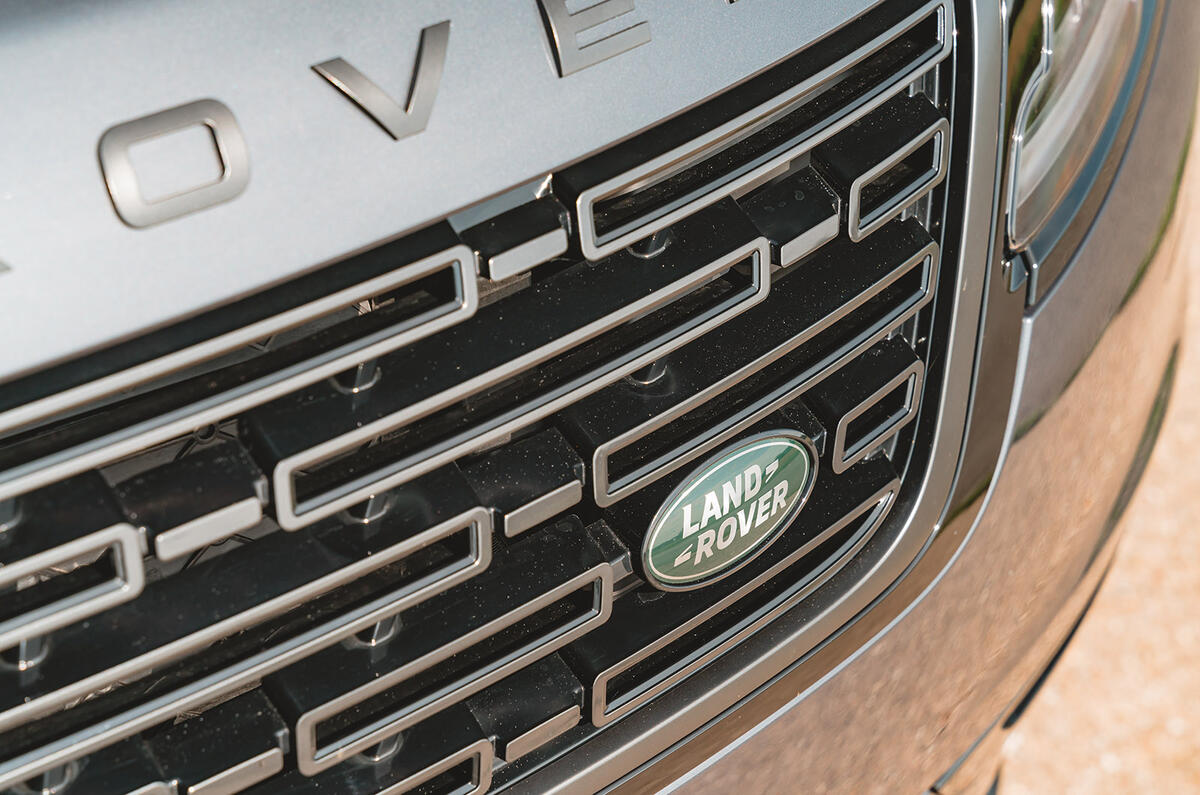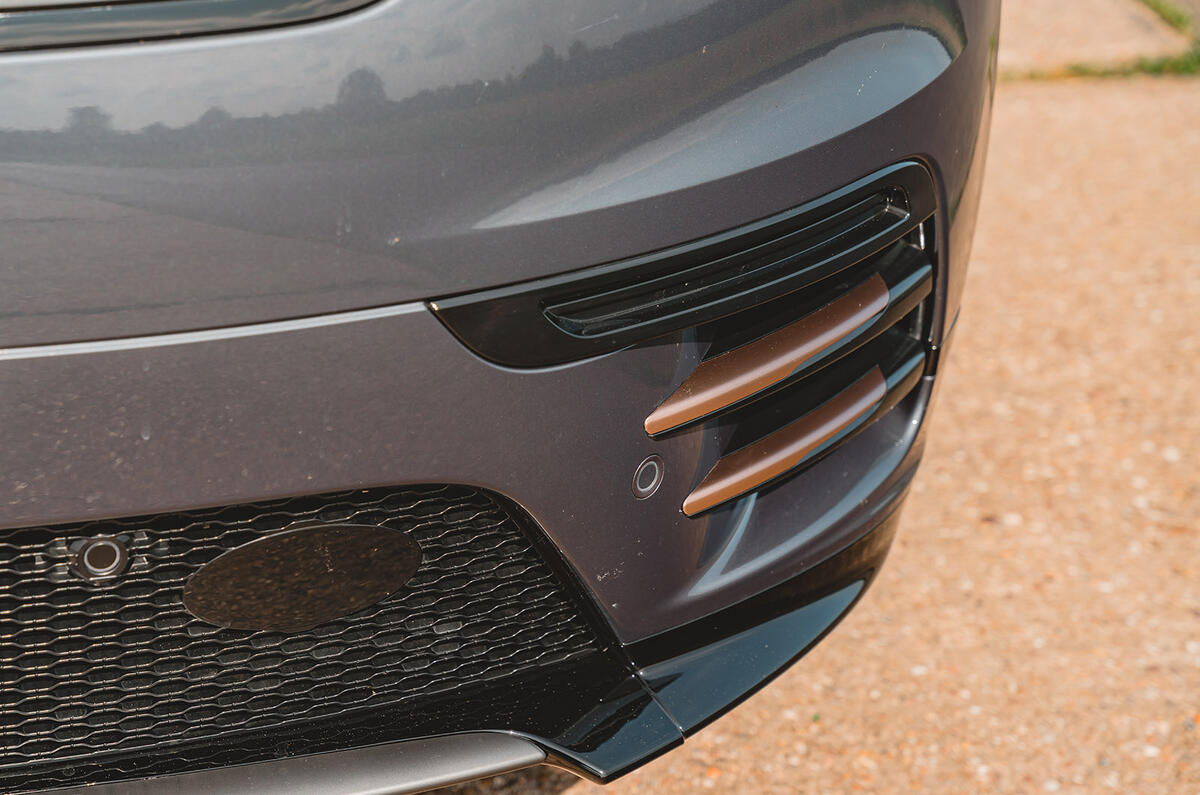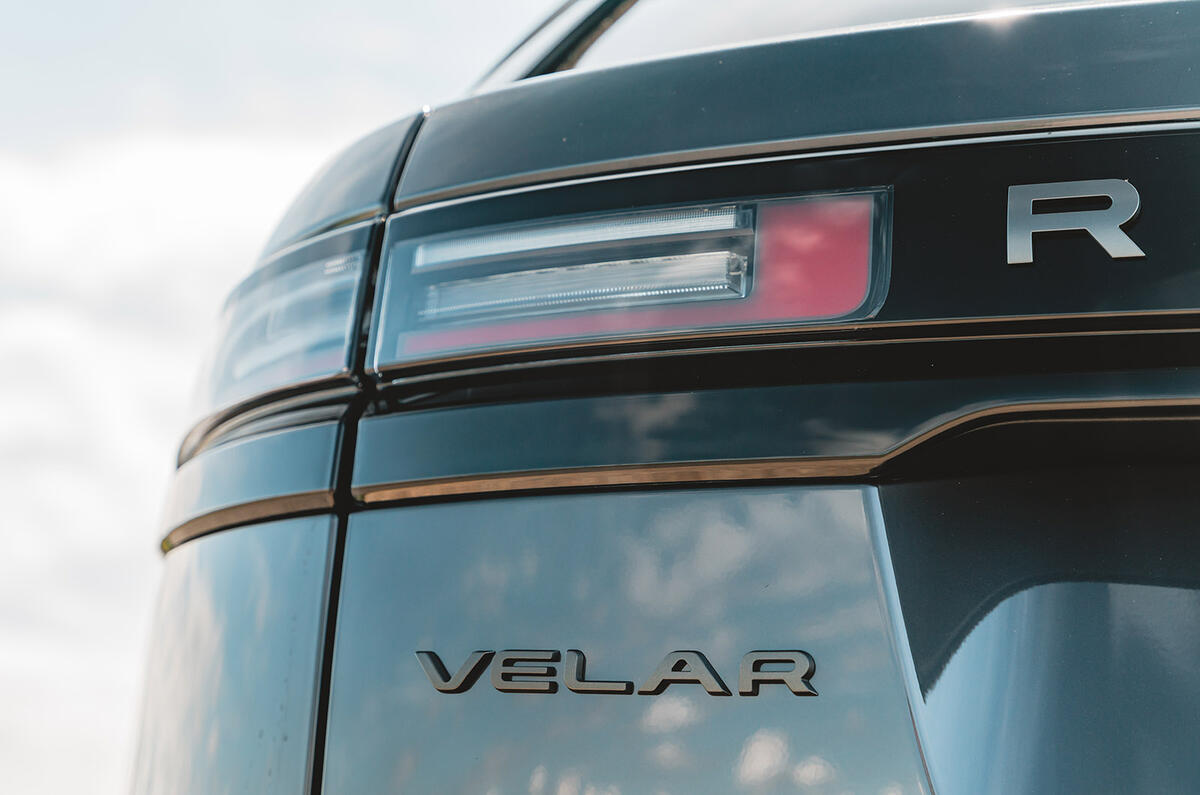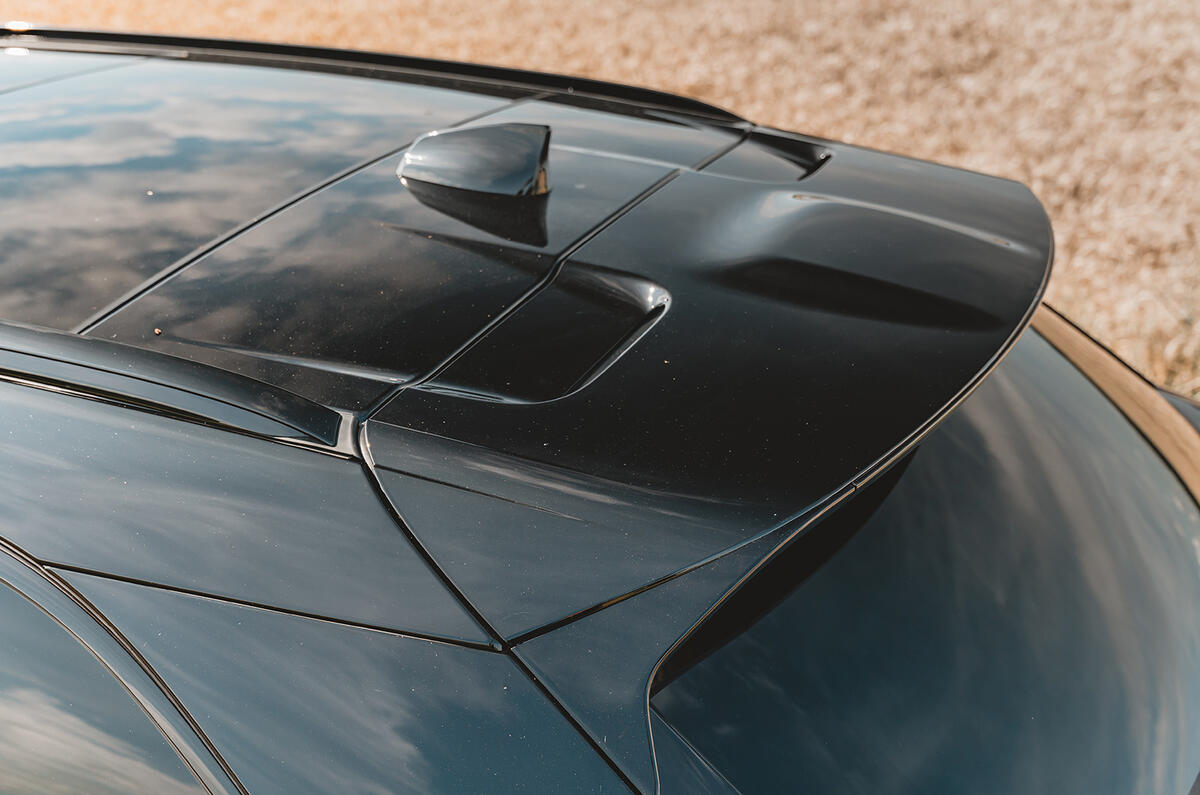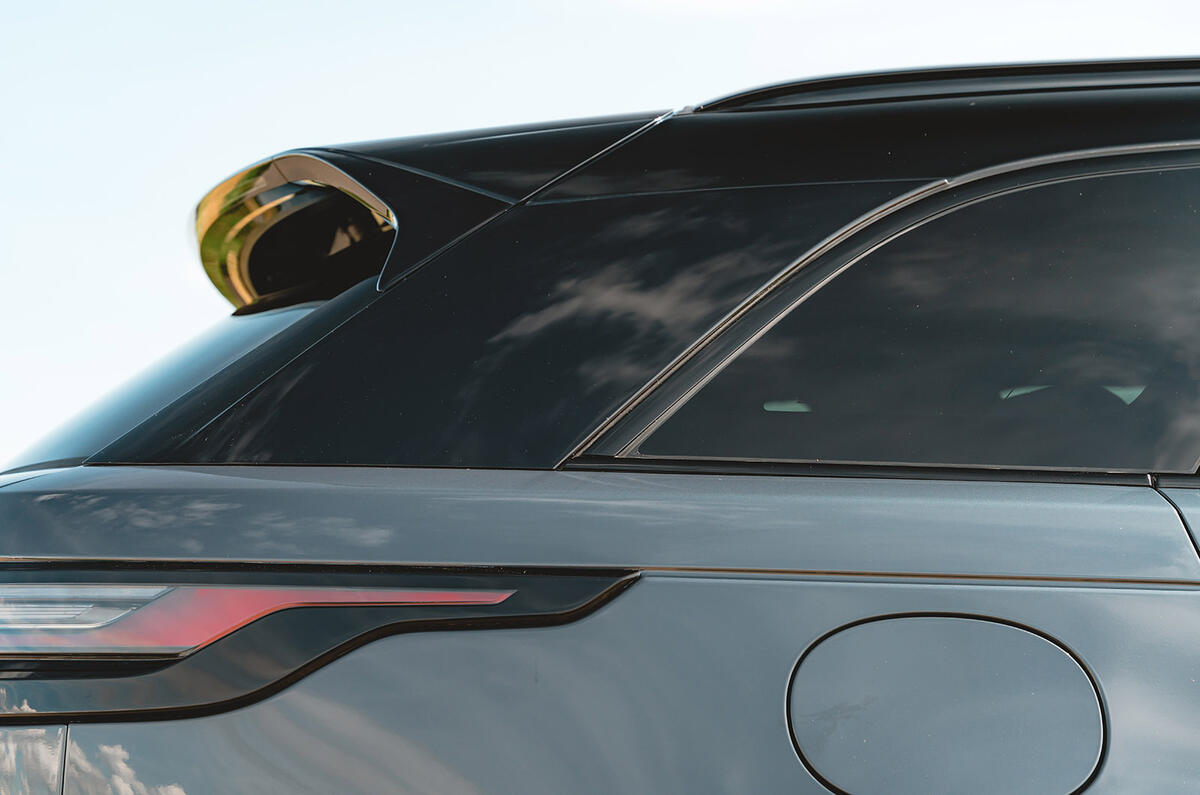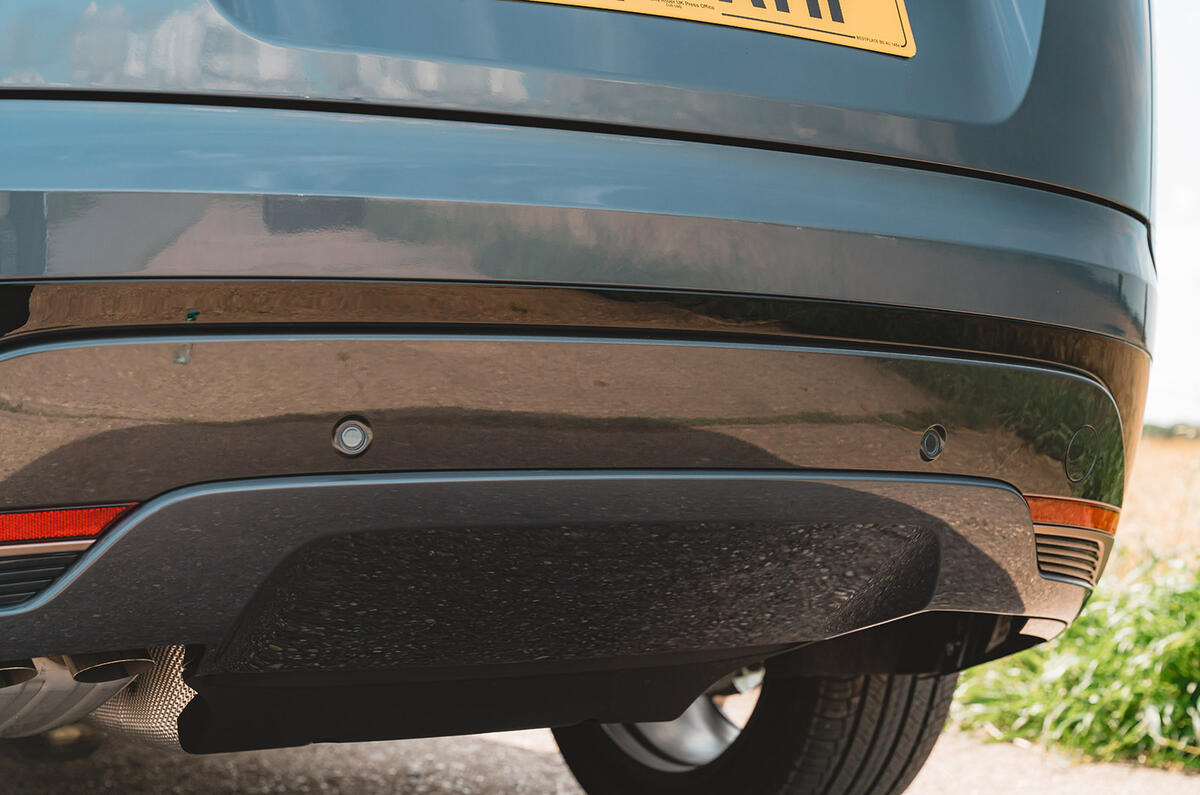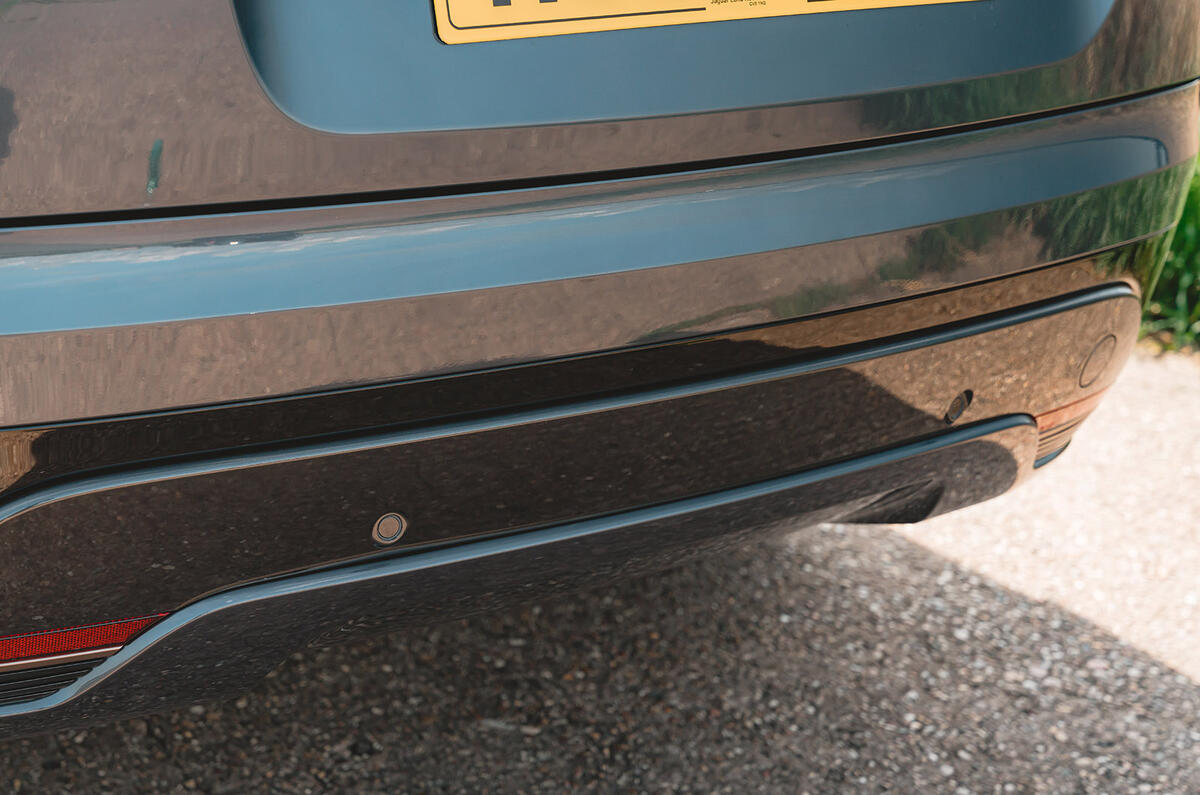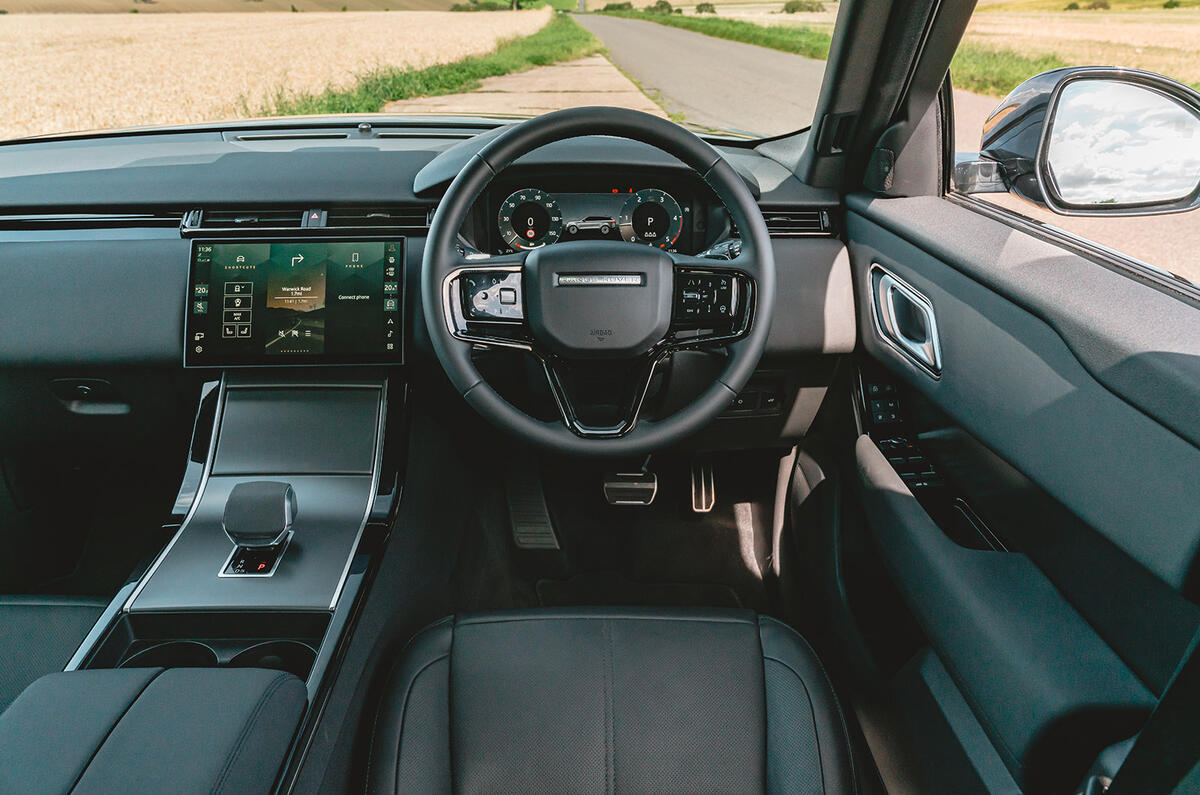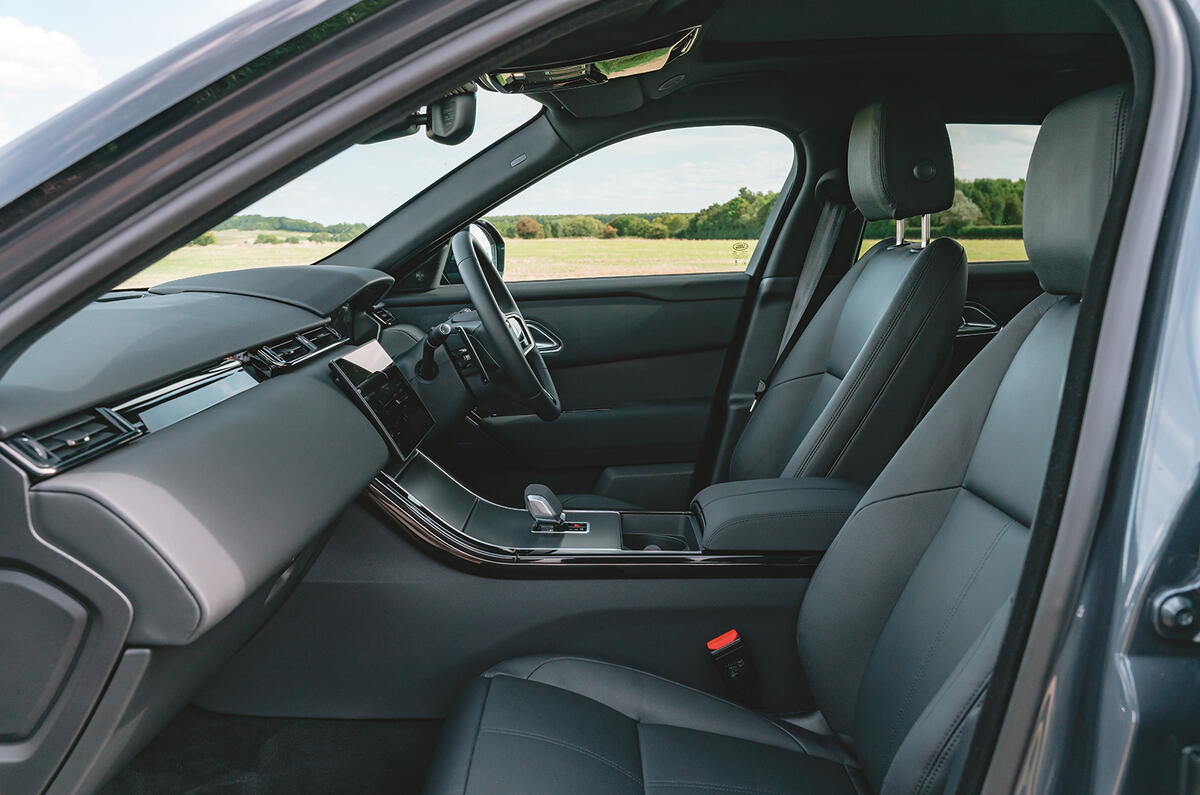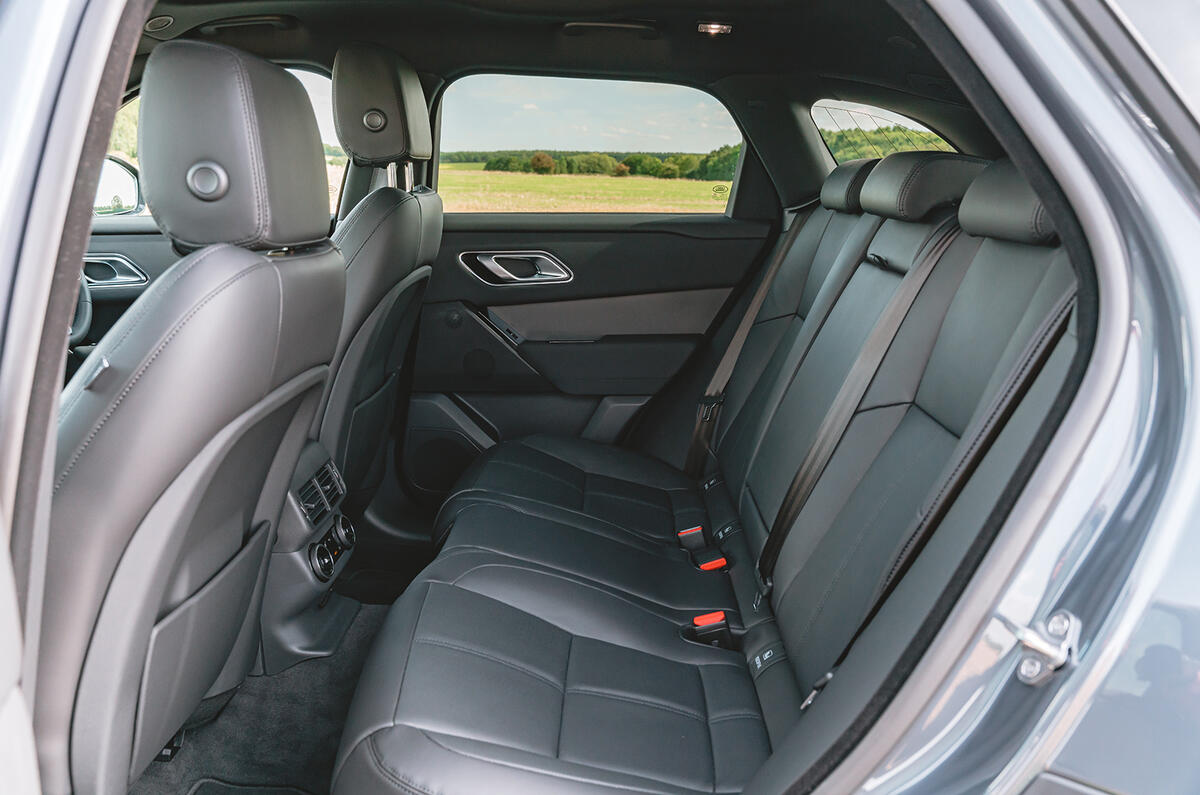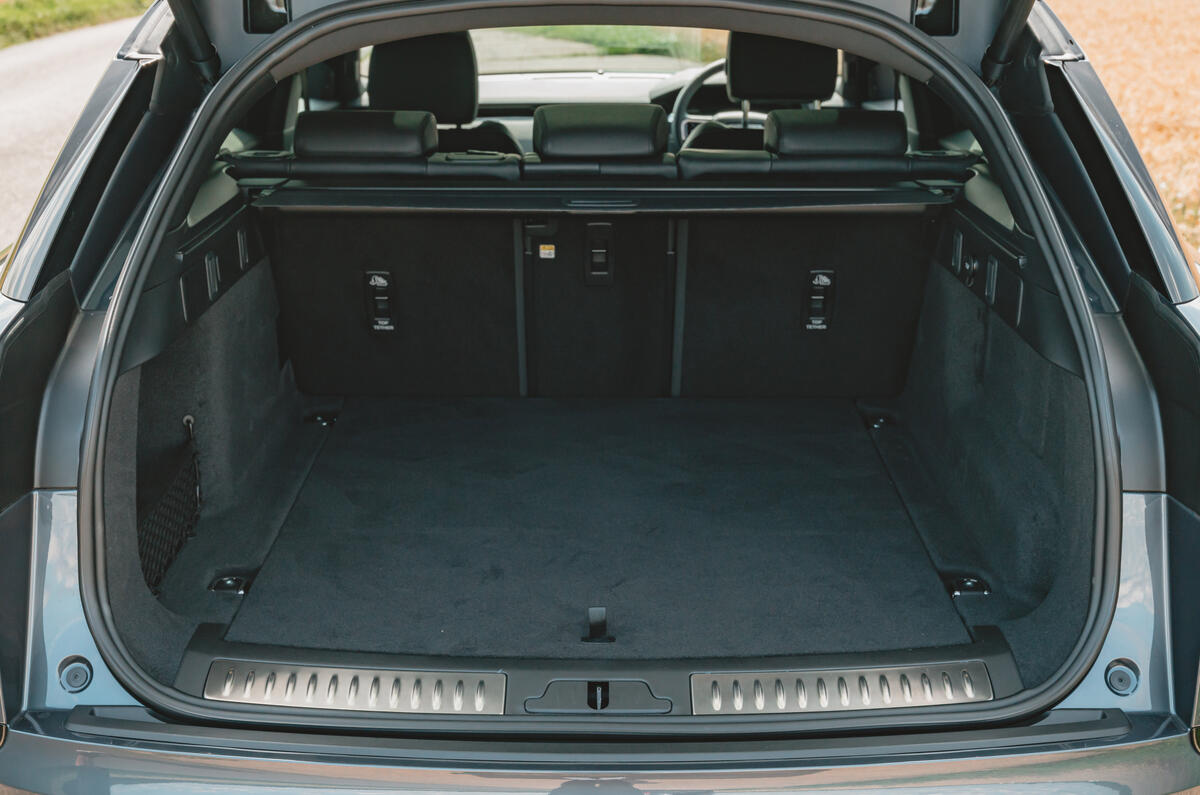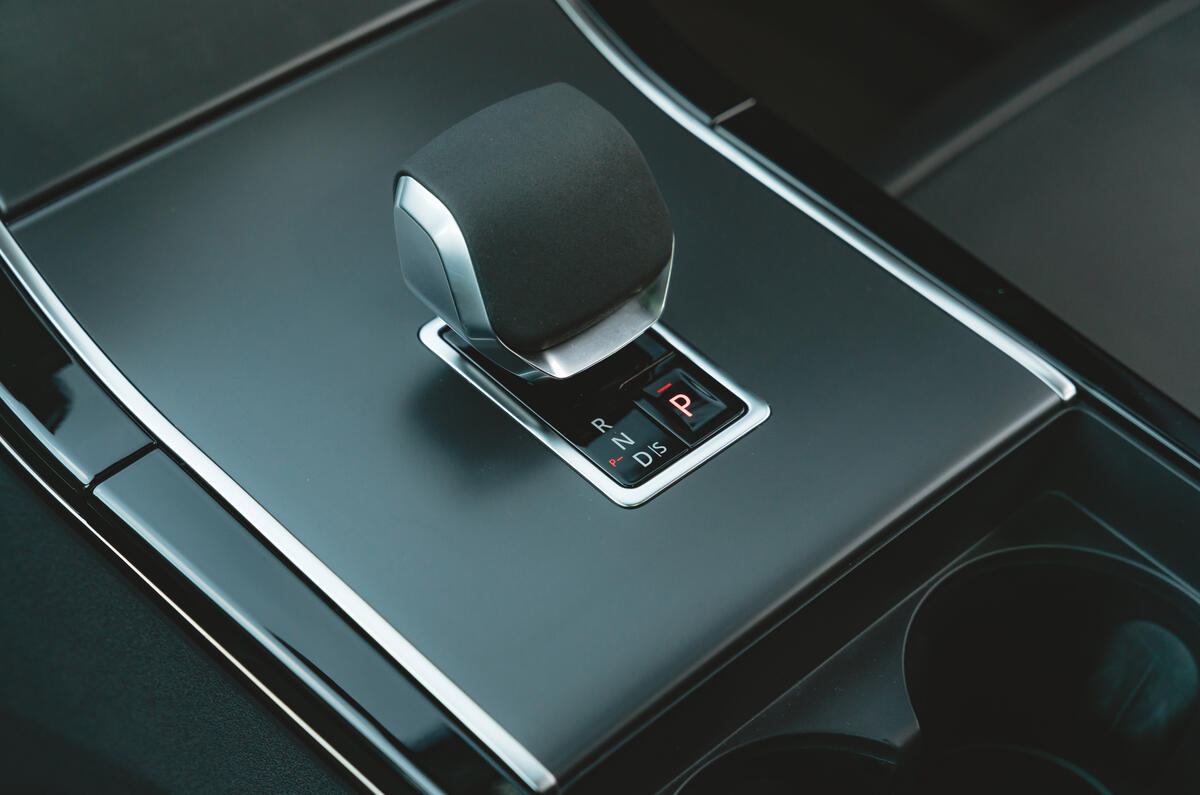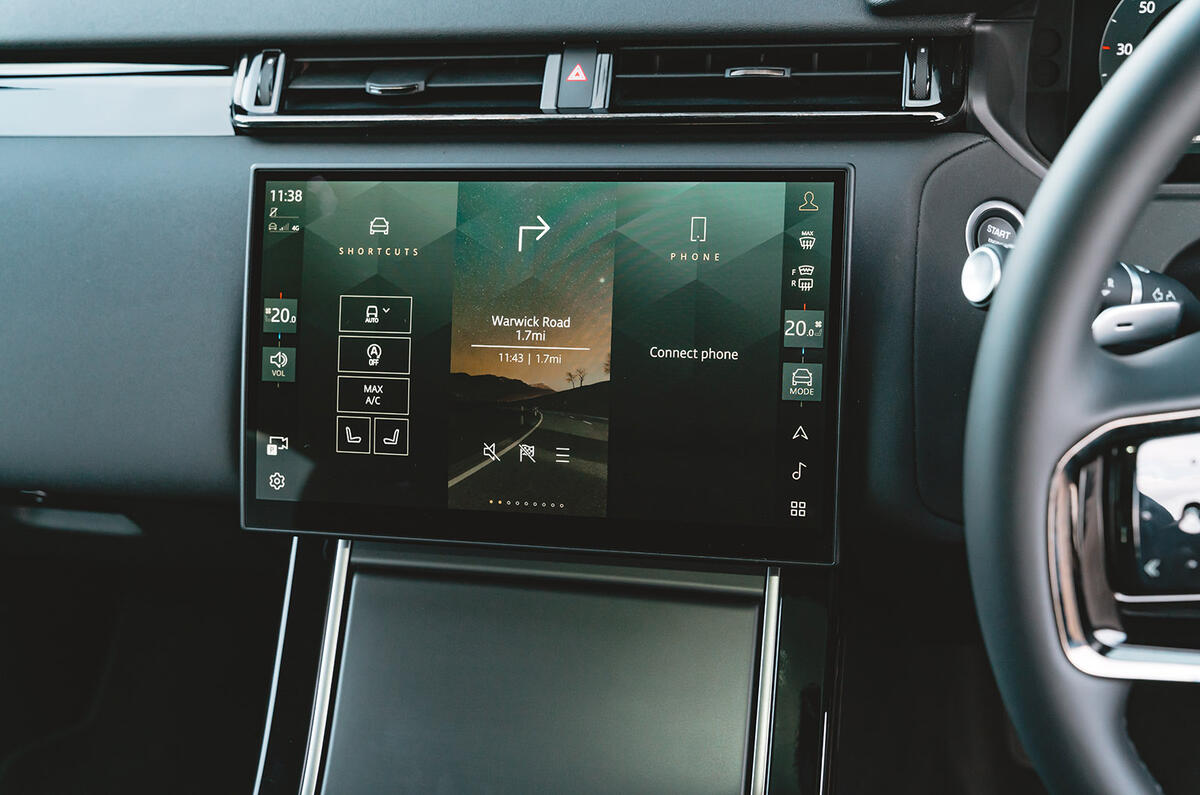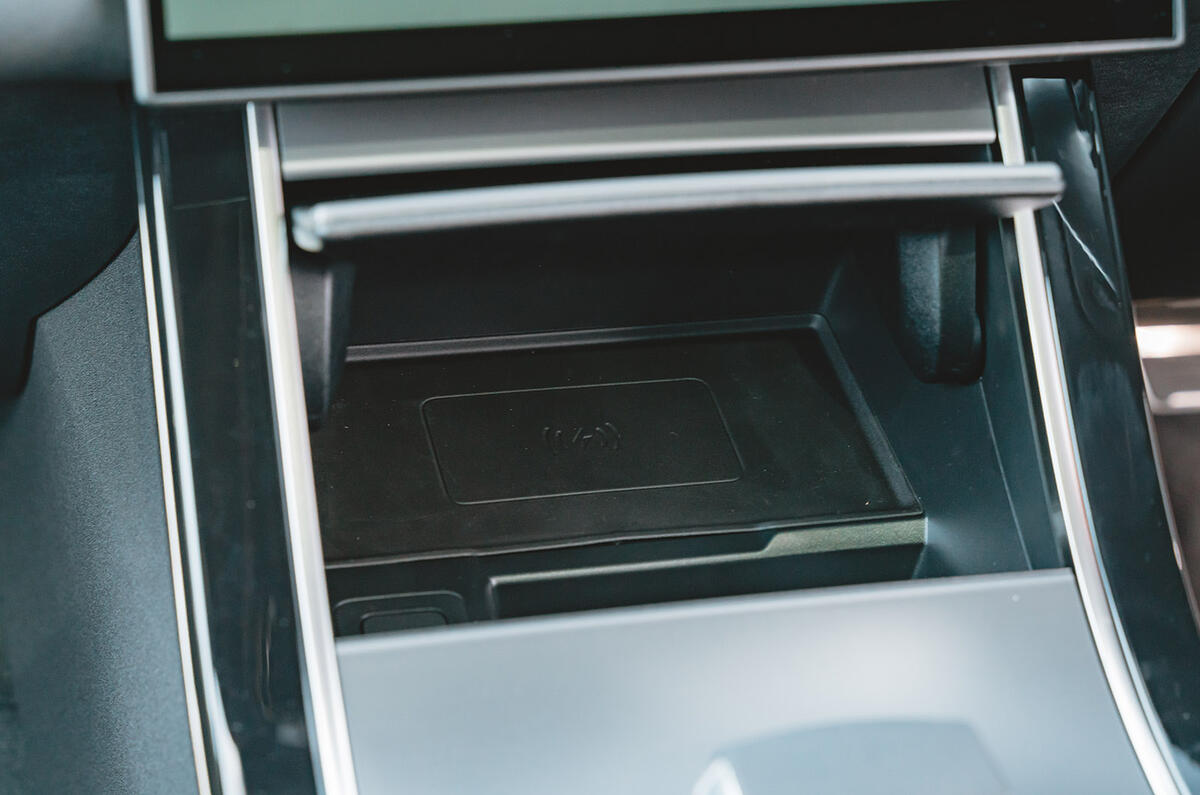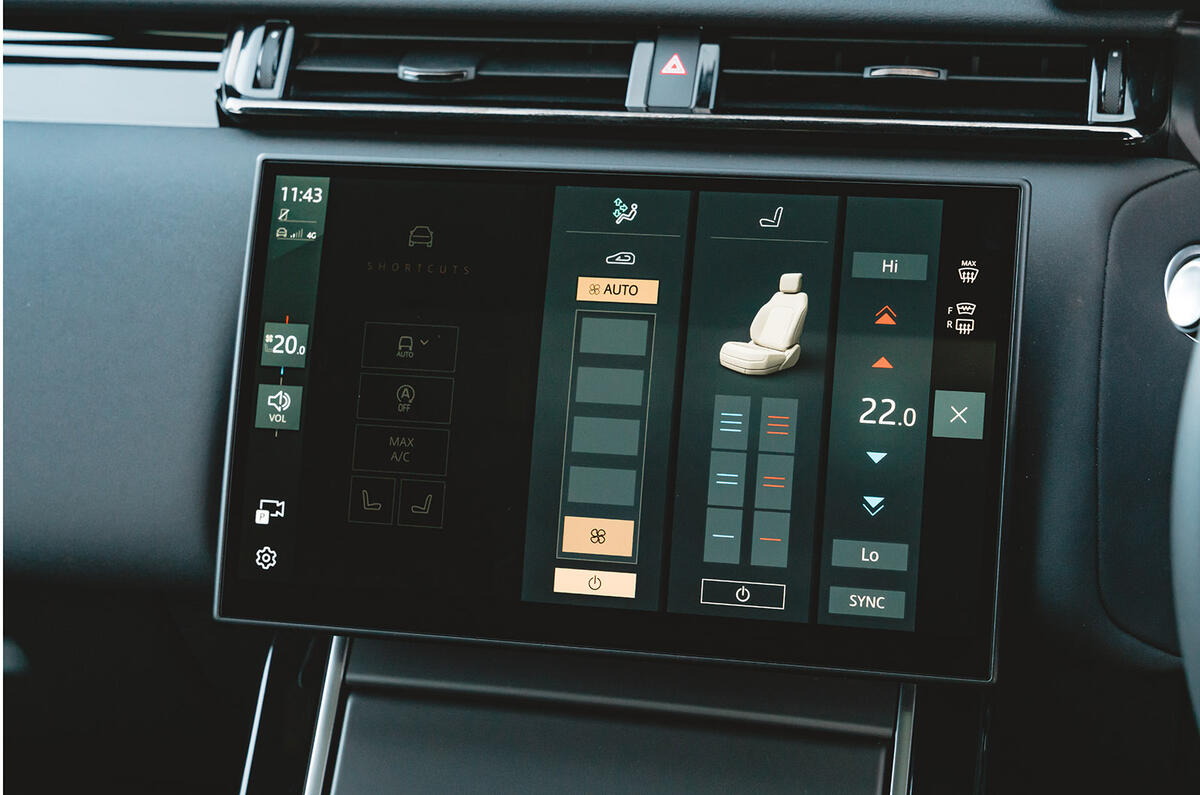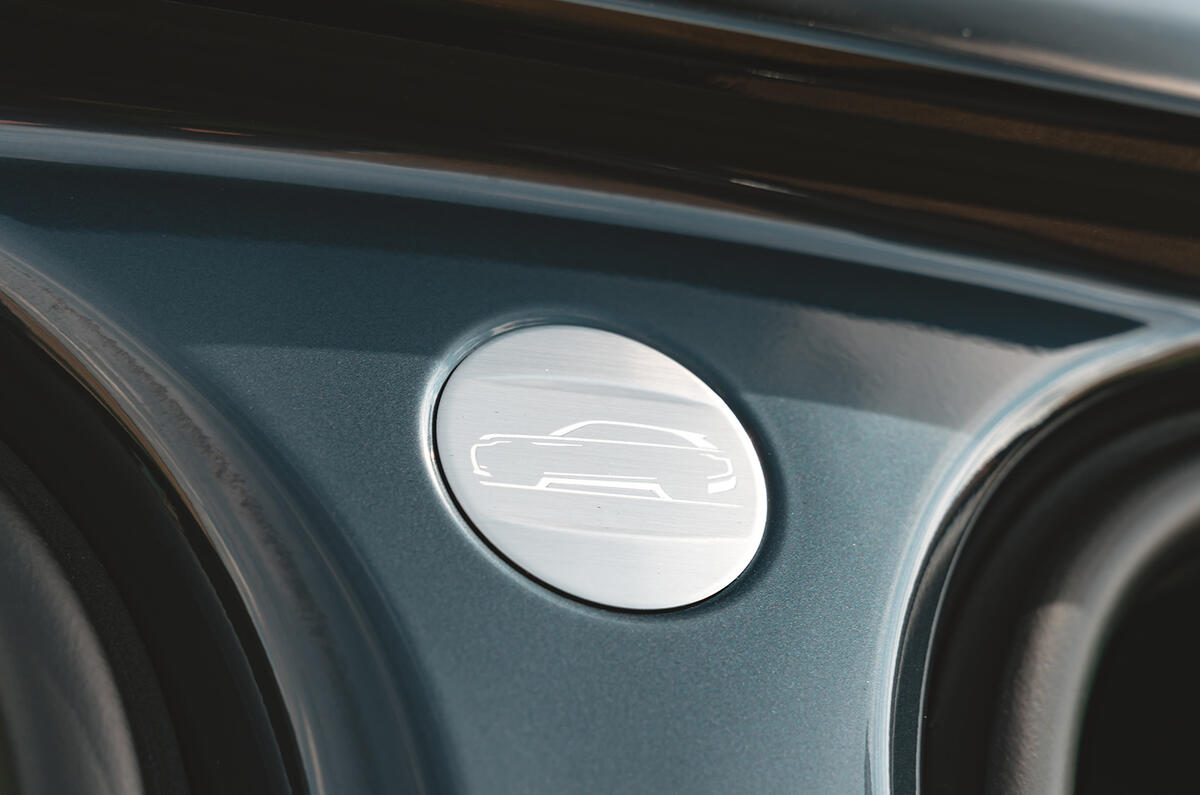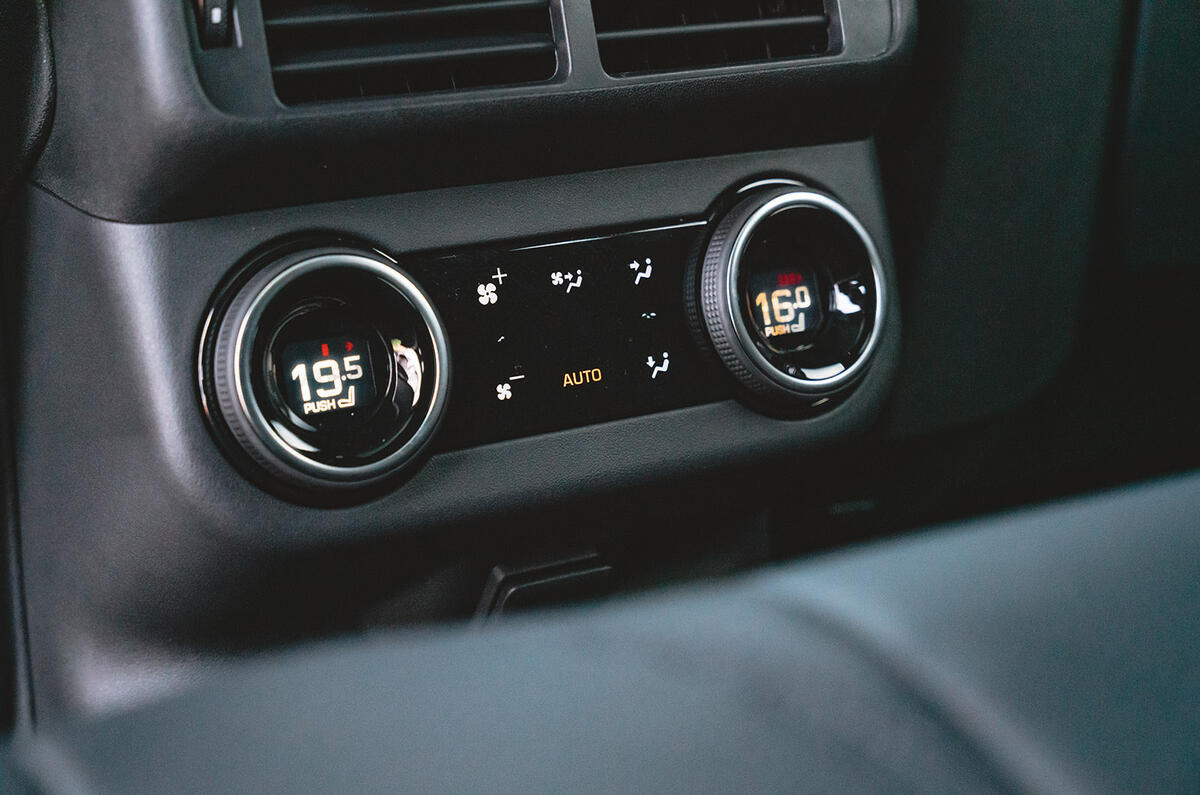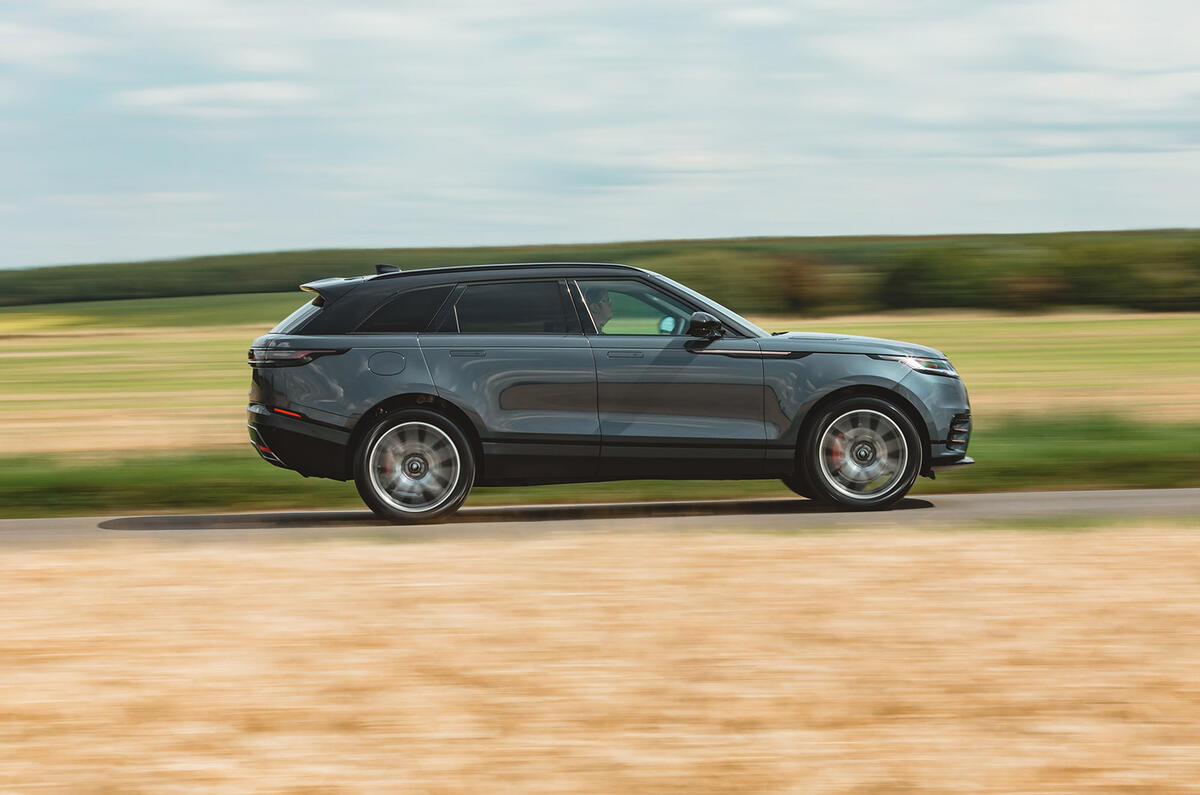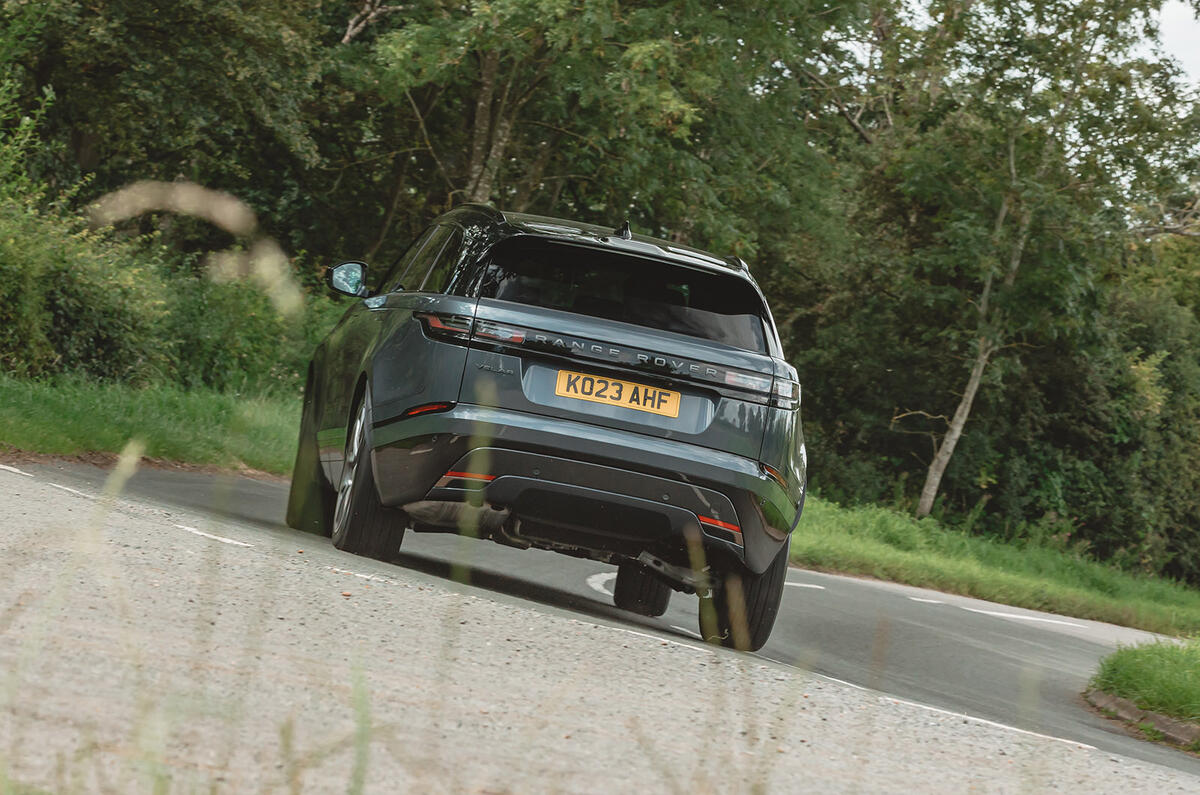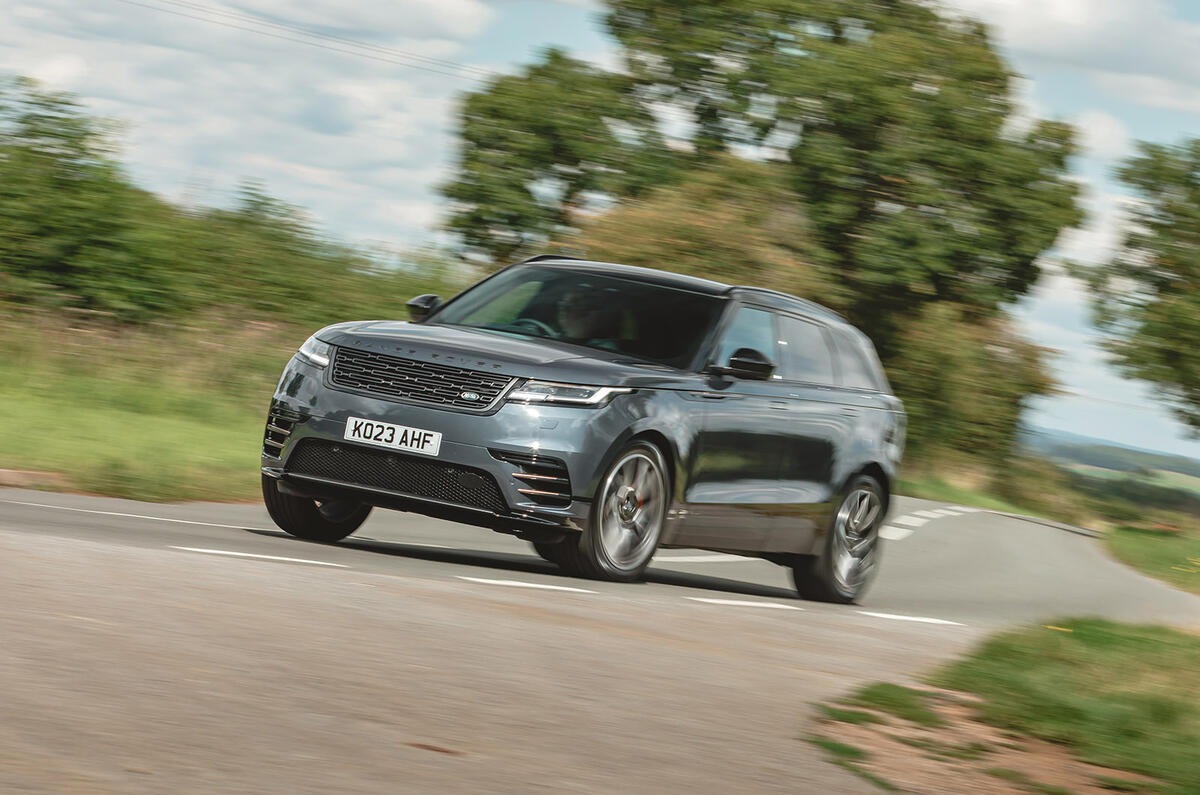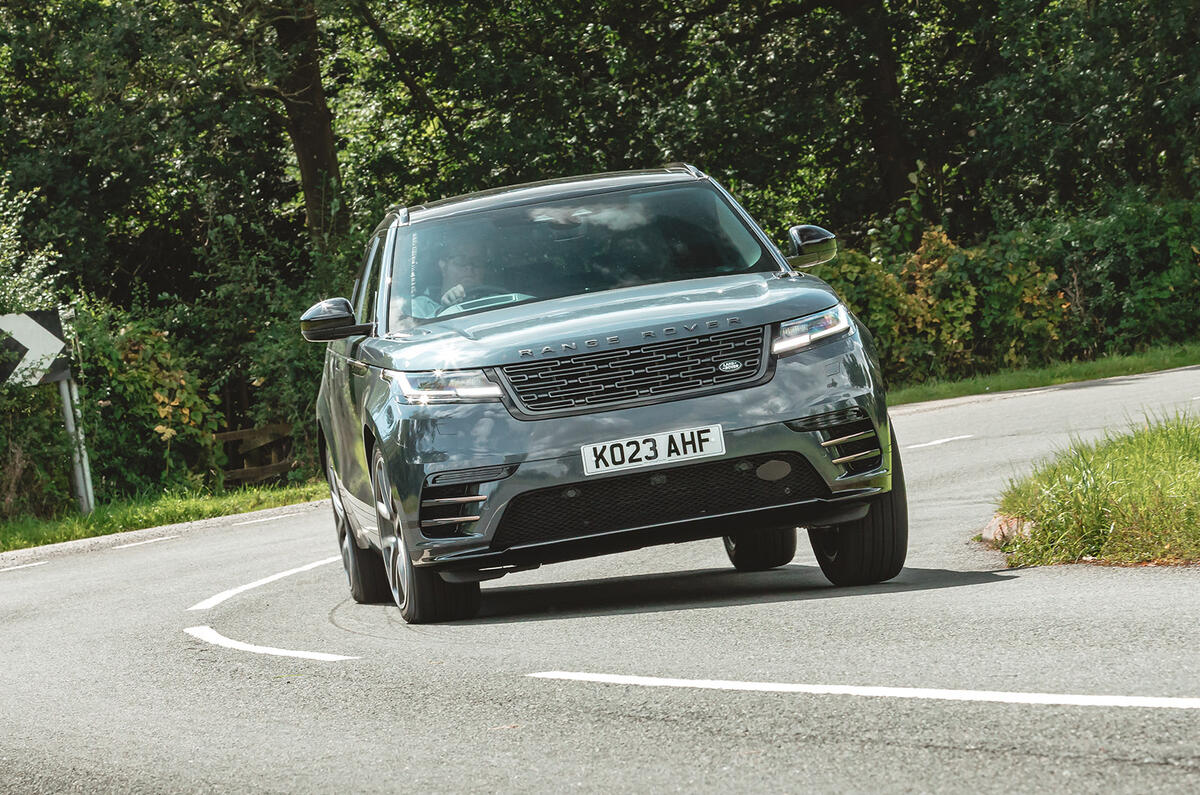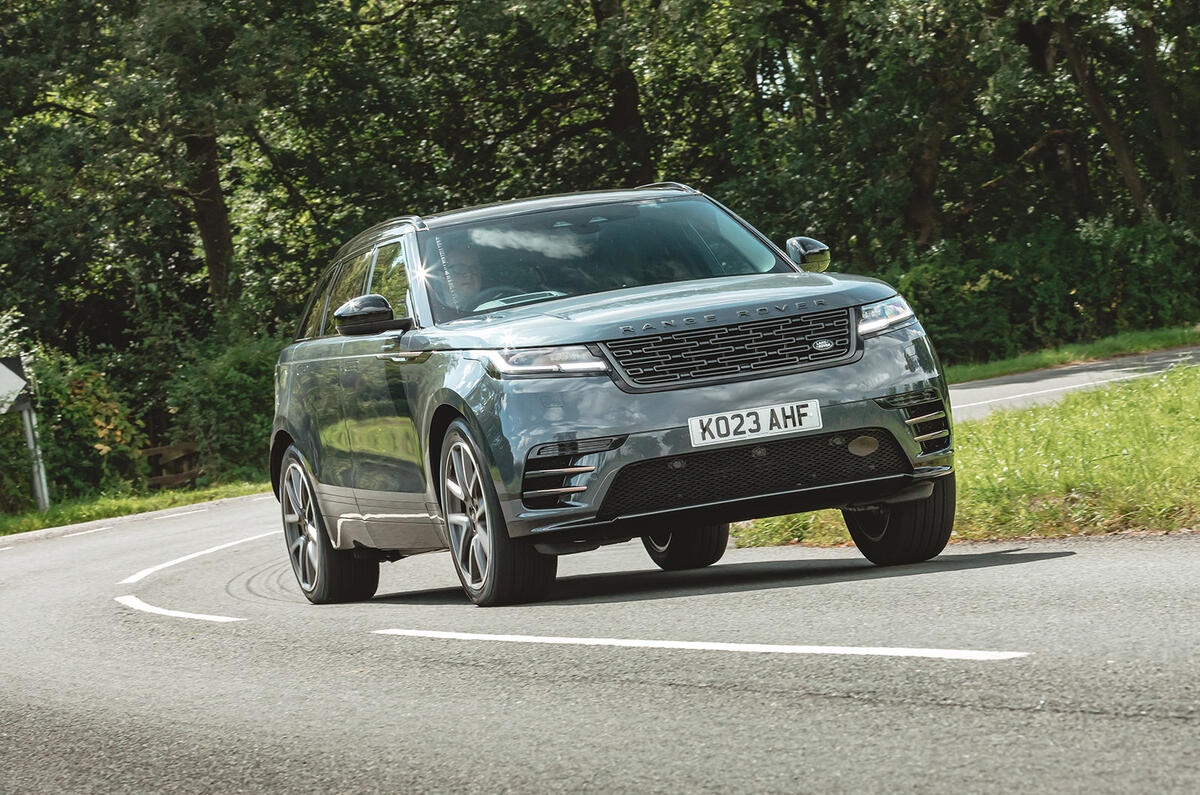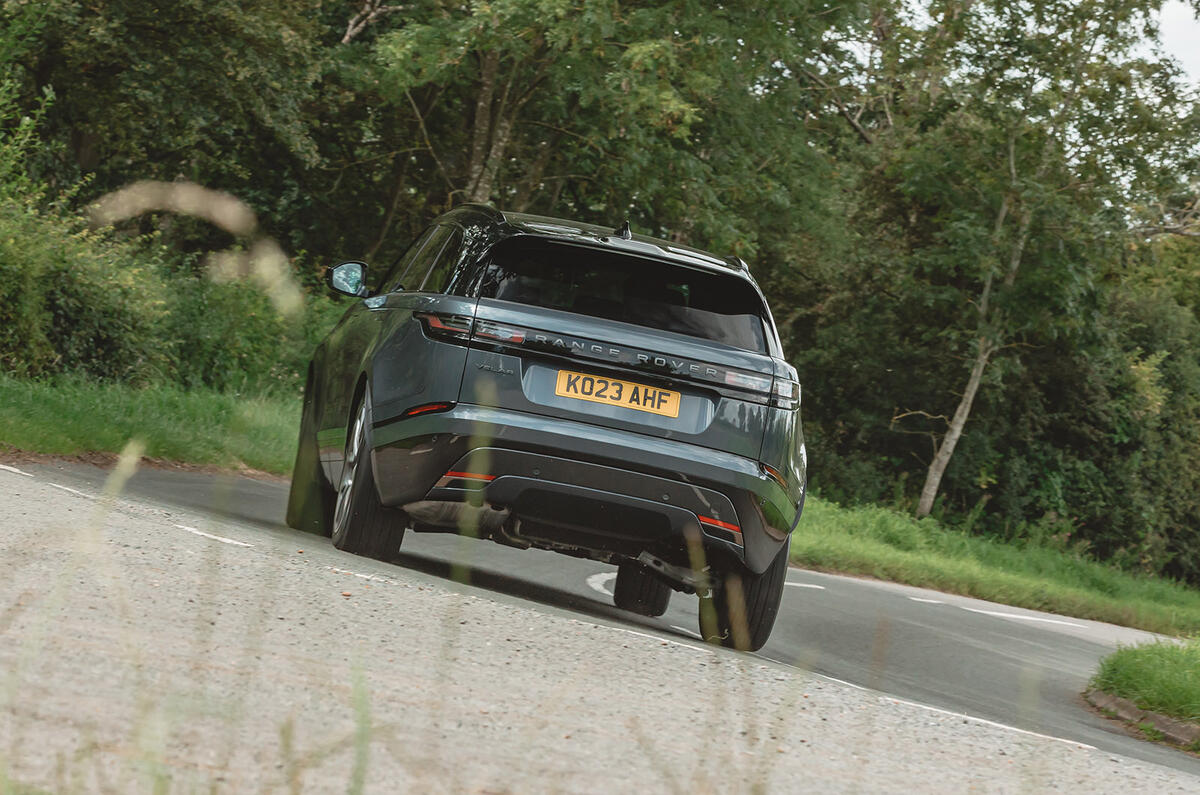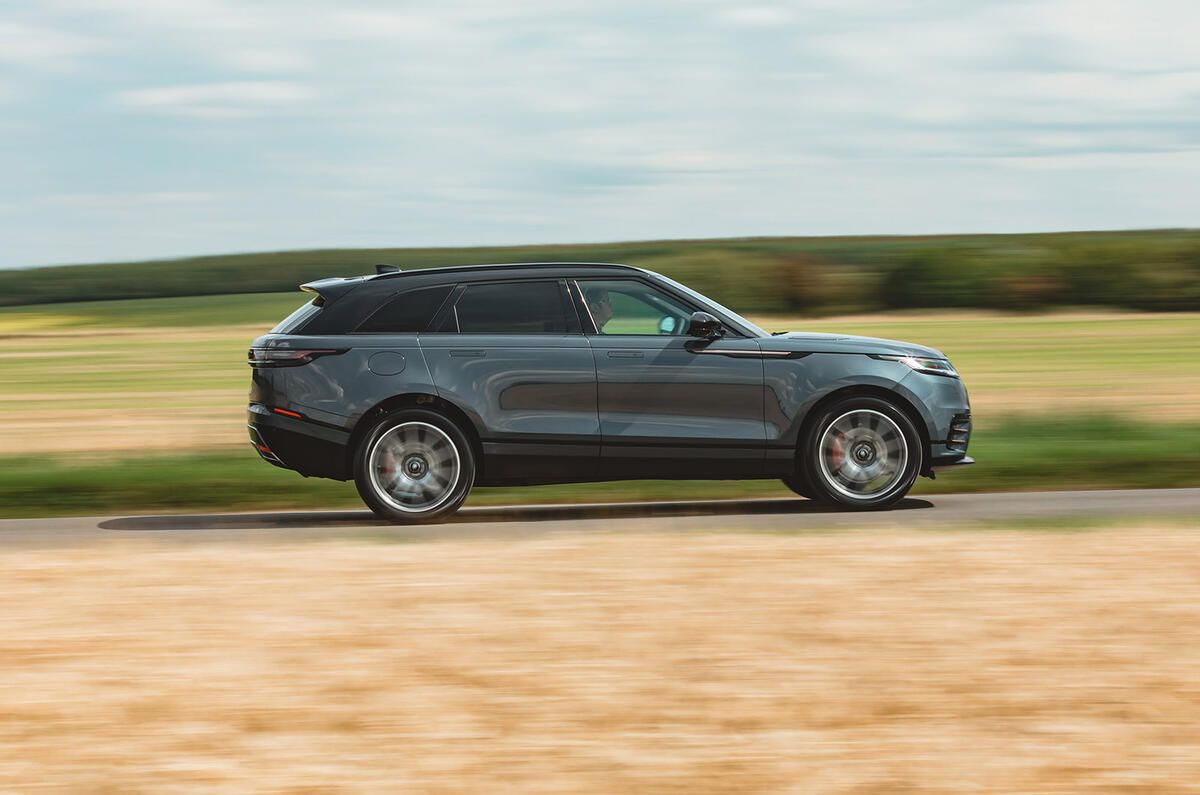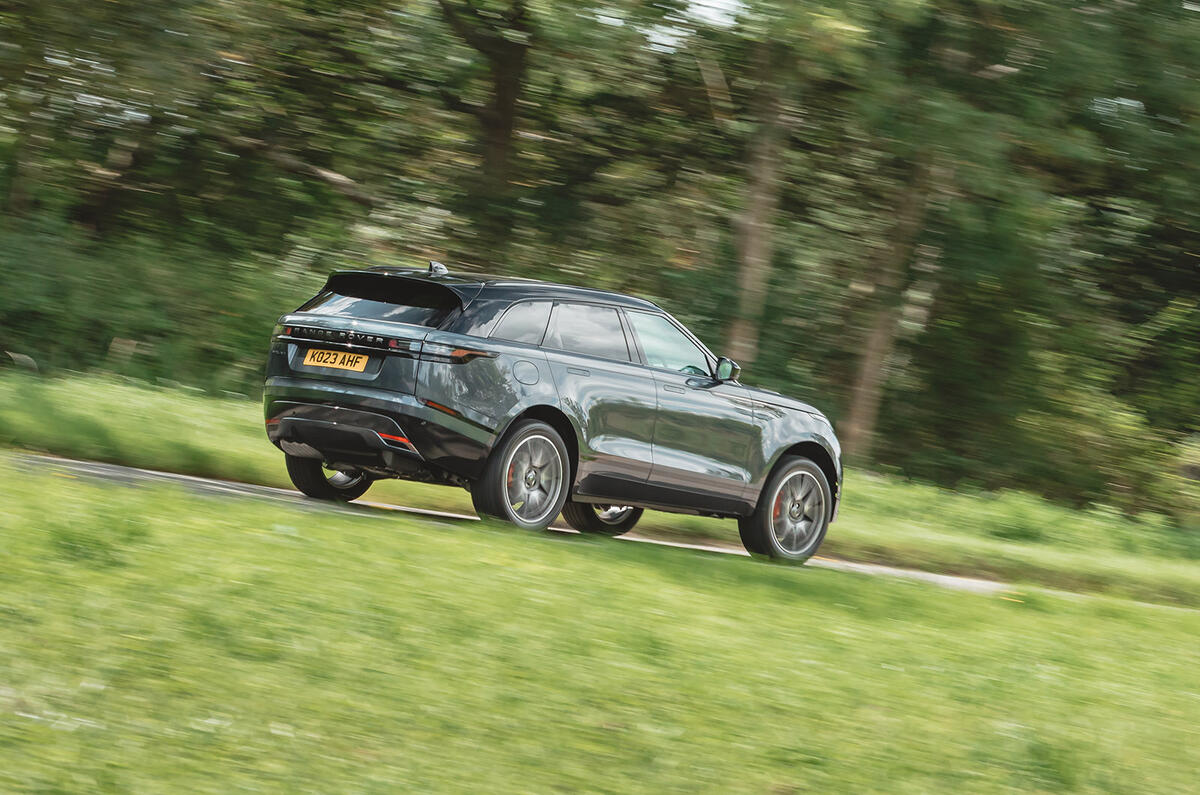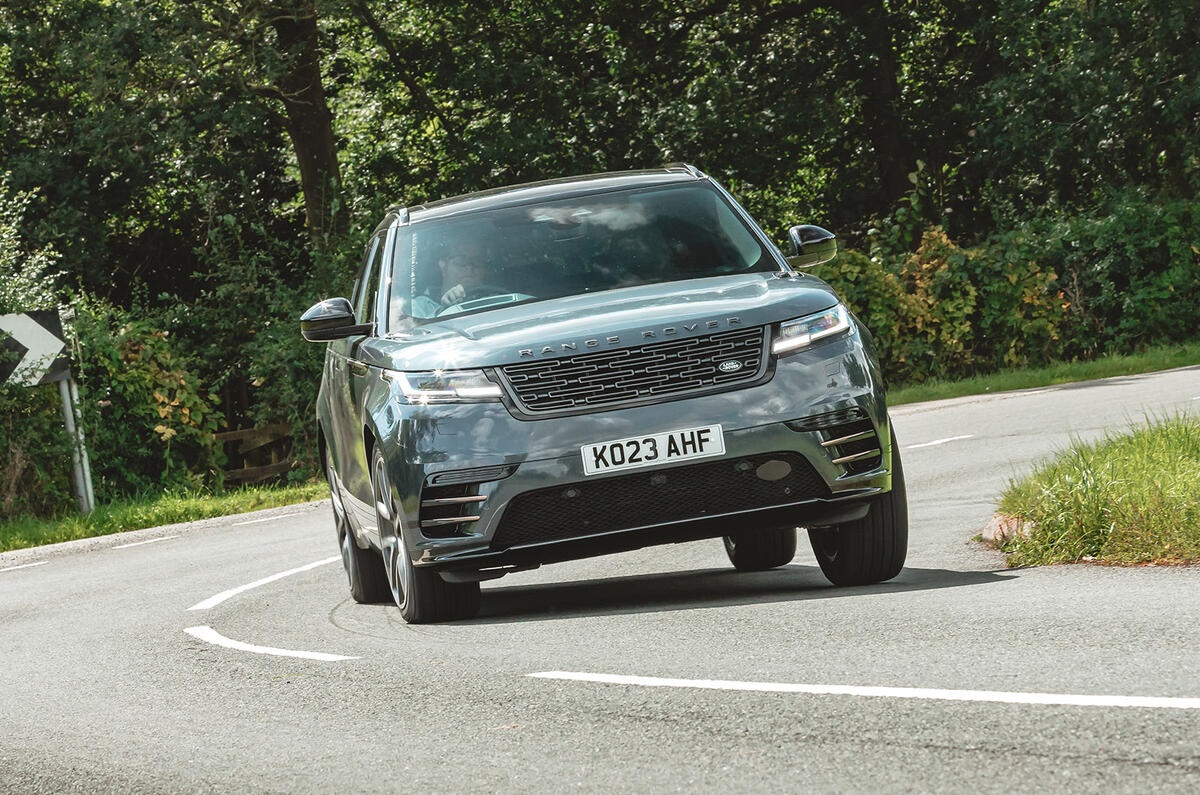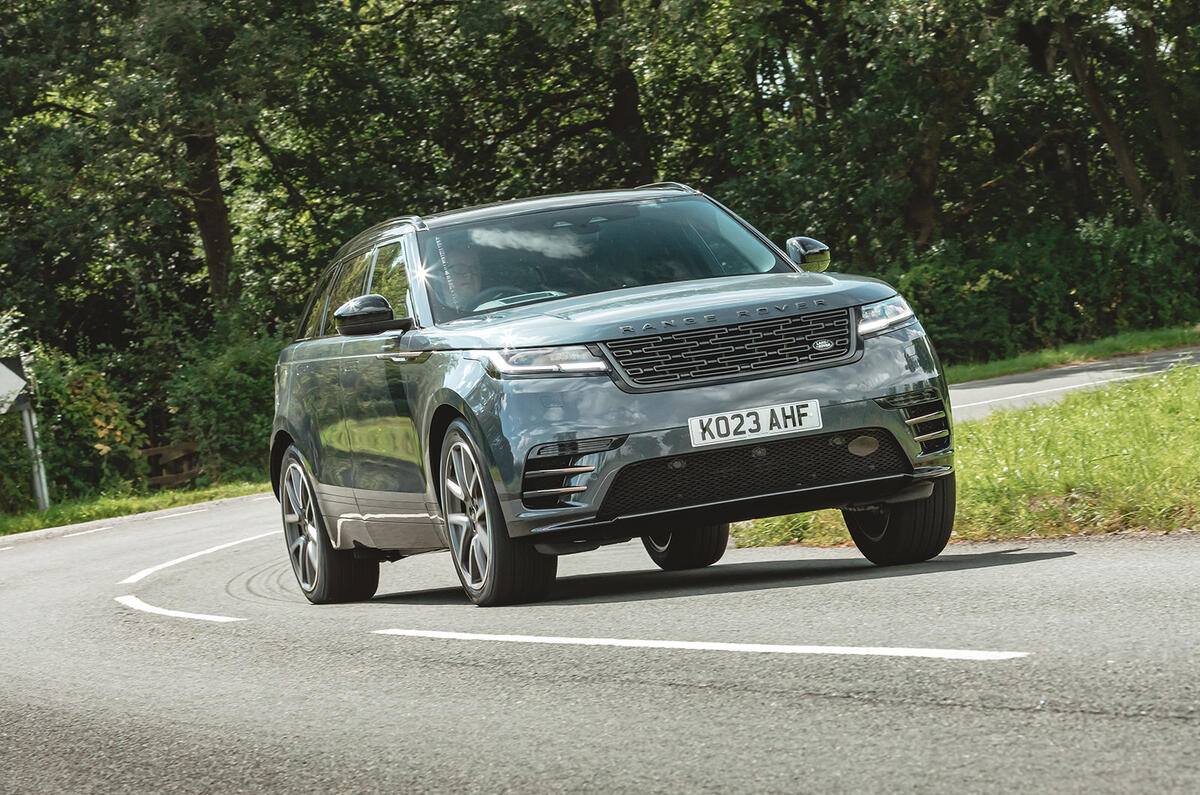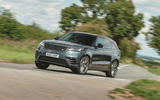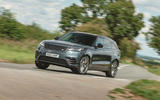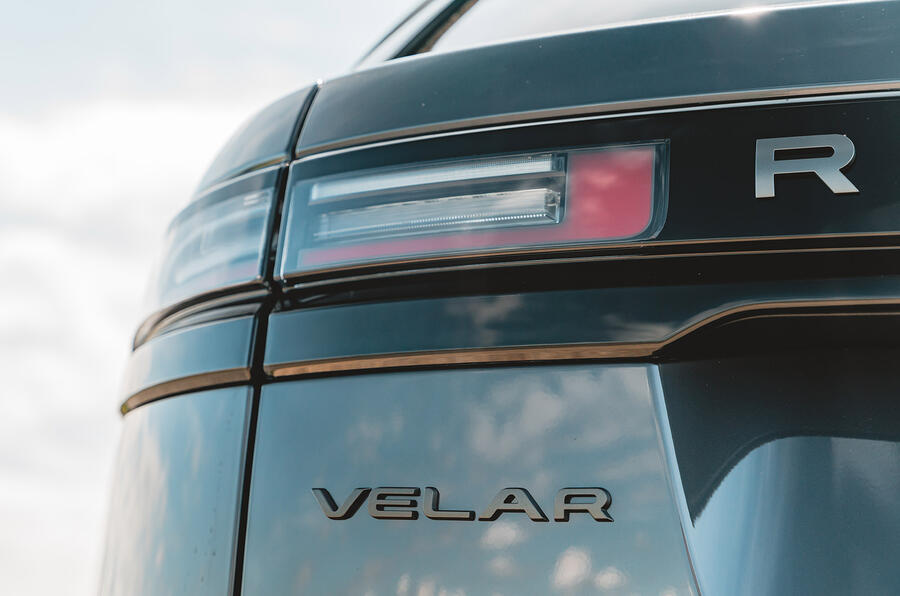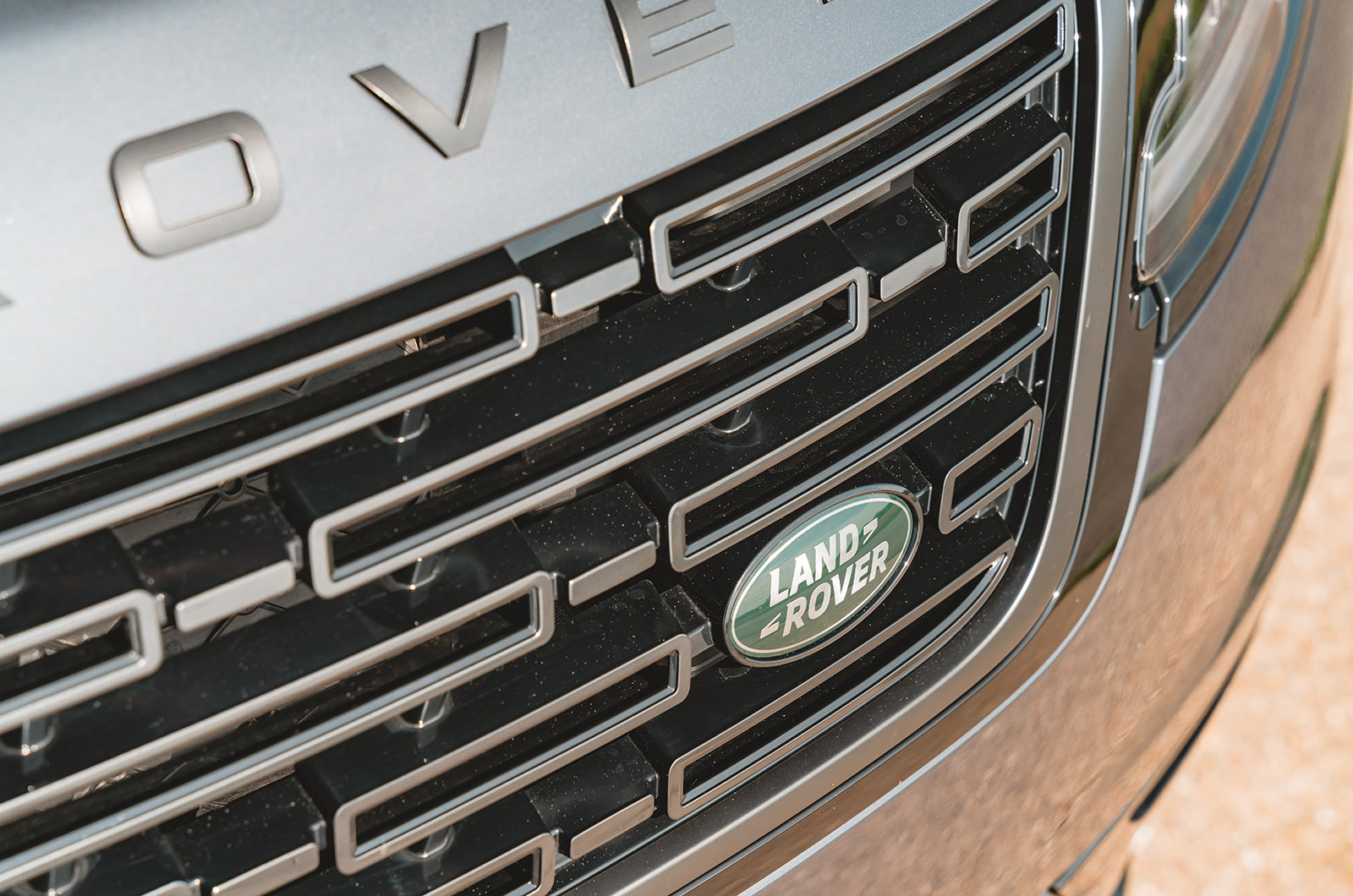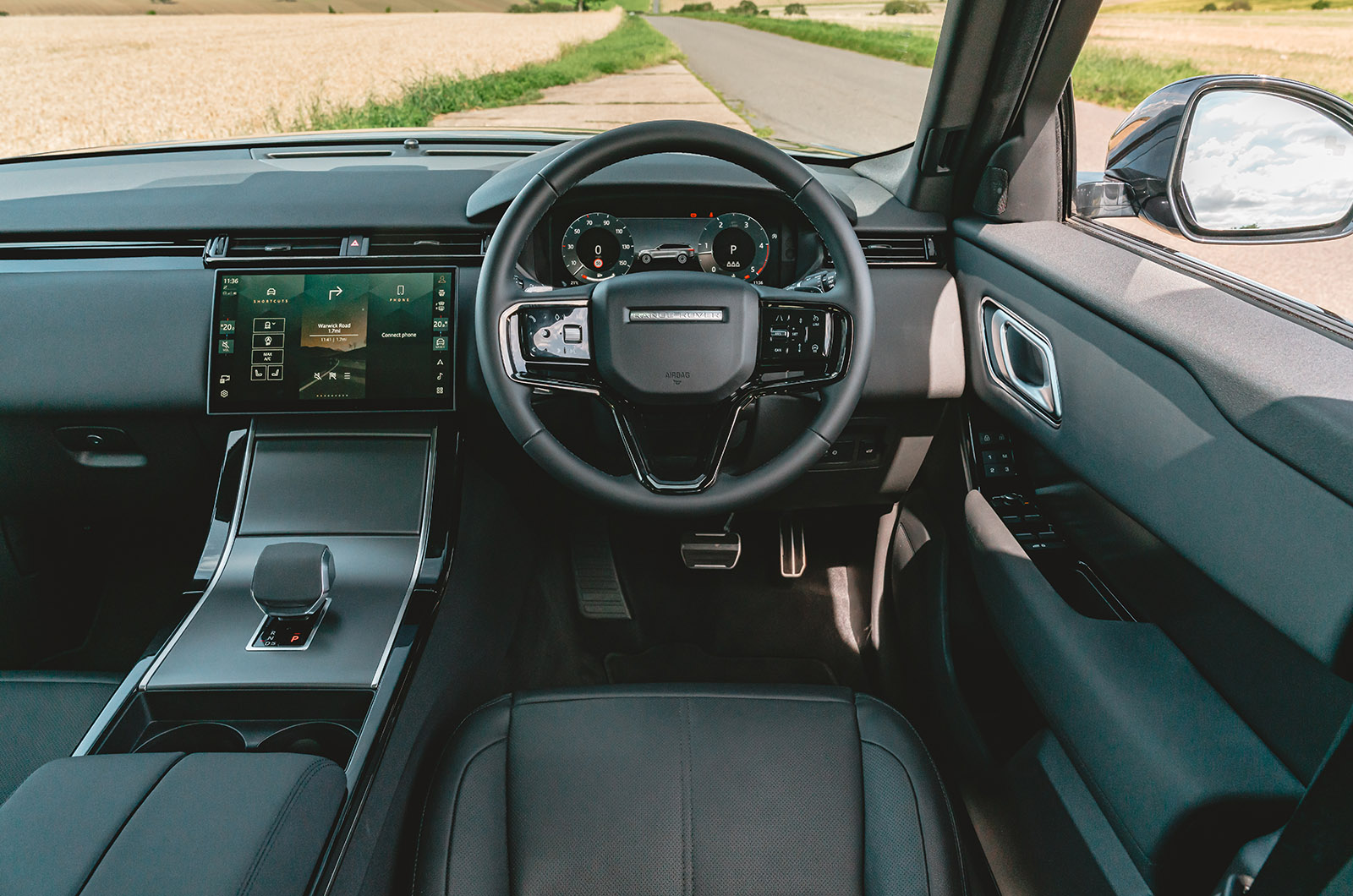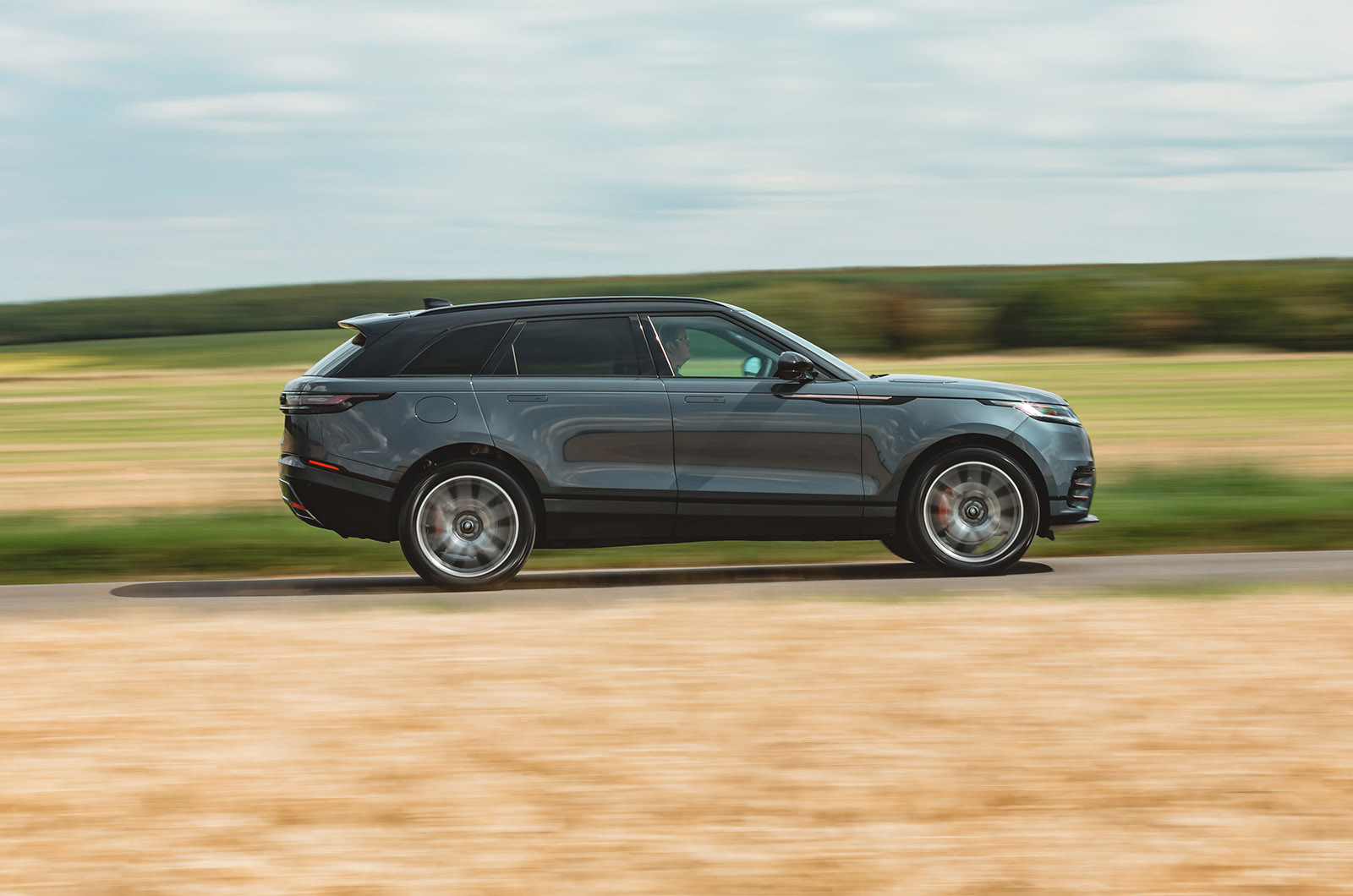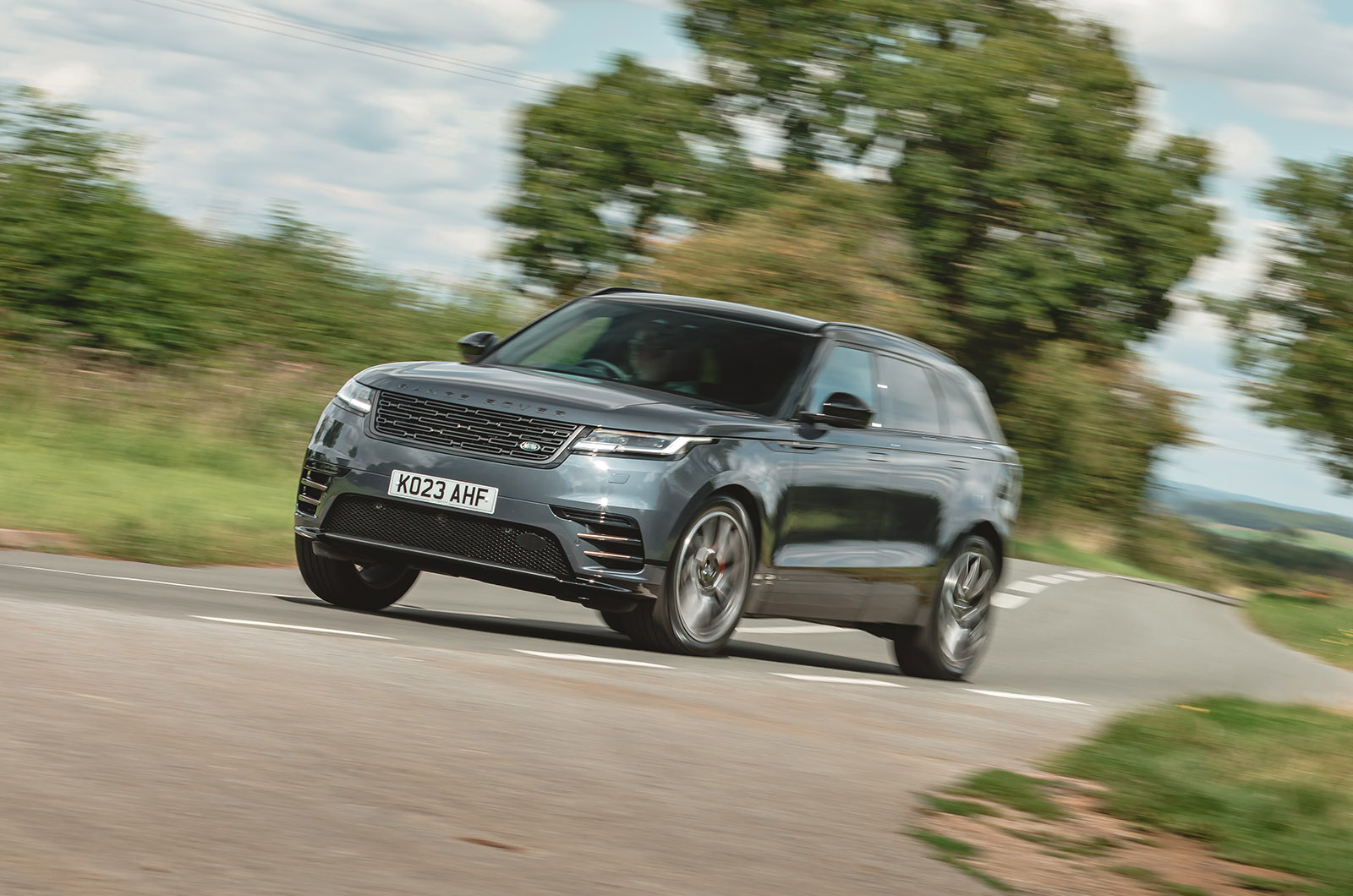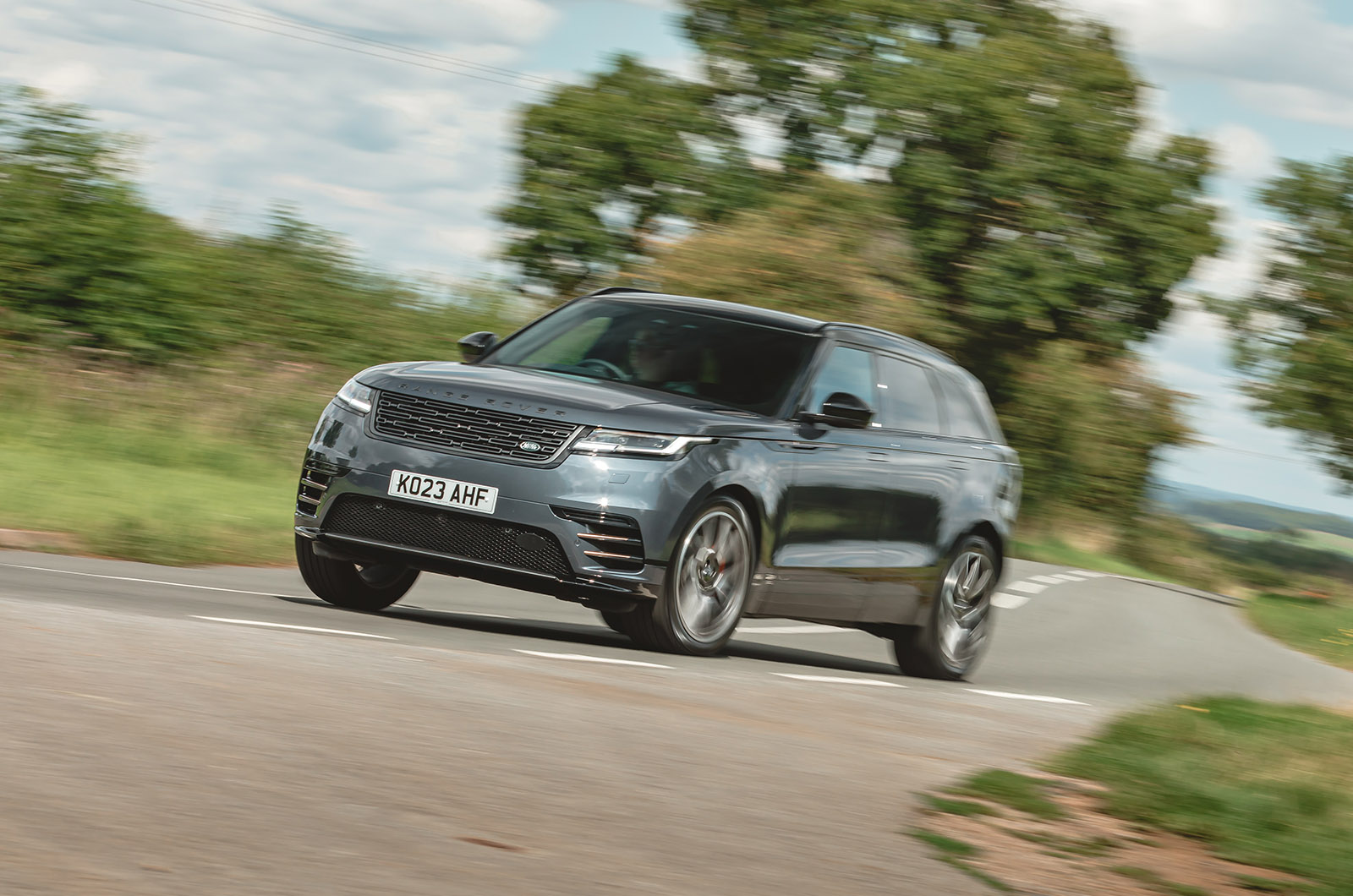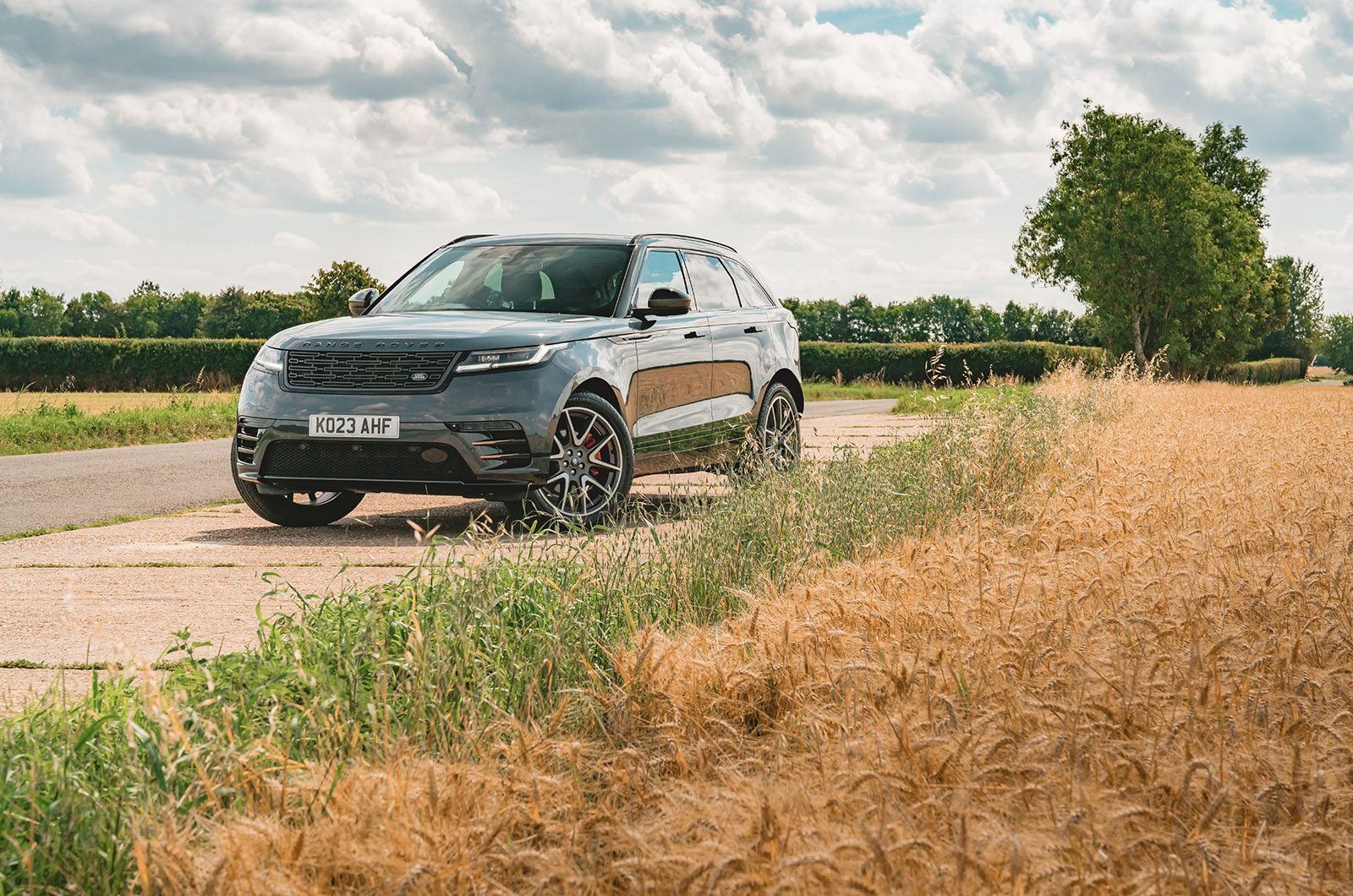It’s the Velar’s interior that’s had the most attention as part of its mid-life update. Having originally come along before JLR started to roll out its latest Pivi Pro touchscreen infotainment system on cars like the Defender, Range Rover and Range Rover Sport, the Velar now becomes the first JLR product with a new-generation Pivi Pro console that takes in even more functionality than previously.
Within its various menu screens, the system integrates the car’s climate control console, audio system controls and its terrain response controls – and that, in turn, has allowed another major paring down and tidying up of the Velar’s transmission tunnel design.
However, the end result, while sleek, looks sparse to the point of bareness. The old car’s physical volume knob and ventilation temperature controls have been junked and the secondary touchscreen panel, of which they used to be part, disposed of entirely, replaced by a storage area and wireless phone charger.
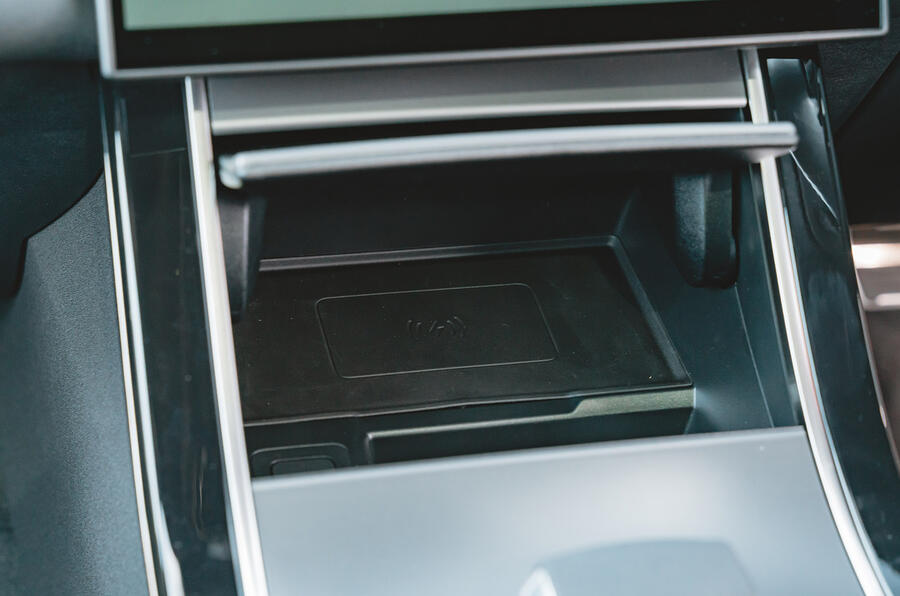
The upshot, rather predictably, is some unwelcome complication of the Velar’s human-machine interface - although a sensible home screen design for the infotainment system, with useful permanent shortcuts along its lateral extremes, mitigates the fallout. You can hop between climate control, navigation, audio system and other menus easily, with one prod of your finger; and 80% of the inputs you’ll need, claims Land Rover, are the work of only two prods.
They are finger prods that require your full attention, however – not a quick flick of your gaze. They plainly distract you from the road more than reaching for a temperature knob that is always where you left it, and turning it, would. They’re also prods on a curved touchscreen display that - however well placed, responsive, and attractively rendered - gets grubby and smudgy much quicker than some, because (without a separate physical cursor controller) you’ve got little option but to poke away at it - and often.
It may be considered folly, after all, for luxury cars to shed too many physical secondary cabin controls, because every one is an opportunity to make your car feel heftier, more expensive and better engineered than the next. The updated Velar’s gear selector is one of very few such opportunities retained - and, haptically speaking, it’s a little bit light and insubstantial.
Elsewhere around the cabin, in our lower-mid-level-trim D200 Dynamic SE test car at least, material cabin quality was a bit up and down. Wherever the pudgy padded fascia materials drove up the perceived standard, you could find harder, cheaper fixtures and finishes not far away.
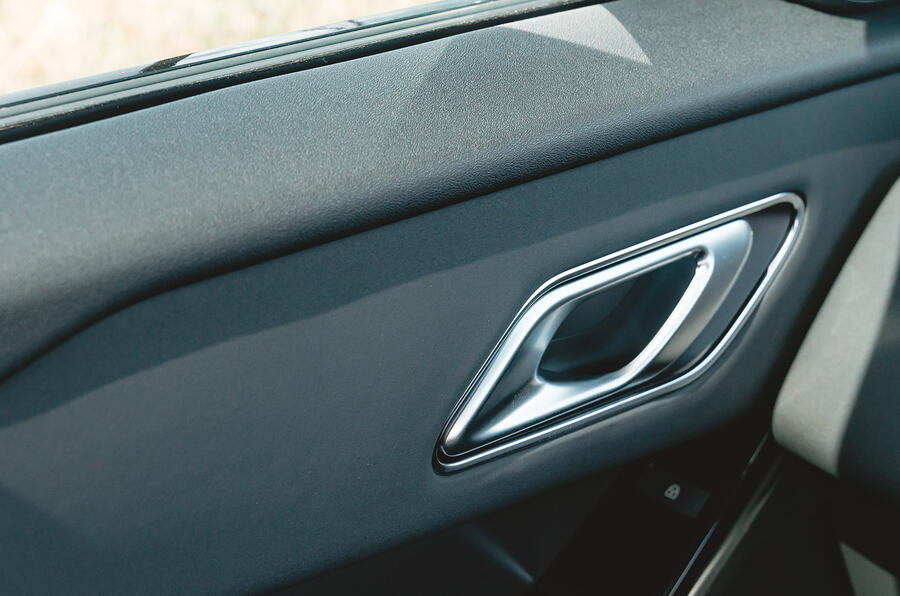
In a broader sense, the Velar's front seats grant a relaxed, semi-recumbent driving position that feels tall if less commanding than in a big Range Rover, or a Range Rover Sport. Visibility is typically good to most, if not all, angles - with bulky B-pillars intruding a little.
There’s plentiful oddments storage, too, and although rear leg room is not much more than adequate in this class (in truth, adults can sit comfortably behind adults, and how much air do you need in front of your knees?), the payback is that the boot is notably bigger than in some mid-sized SUVs.



